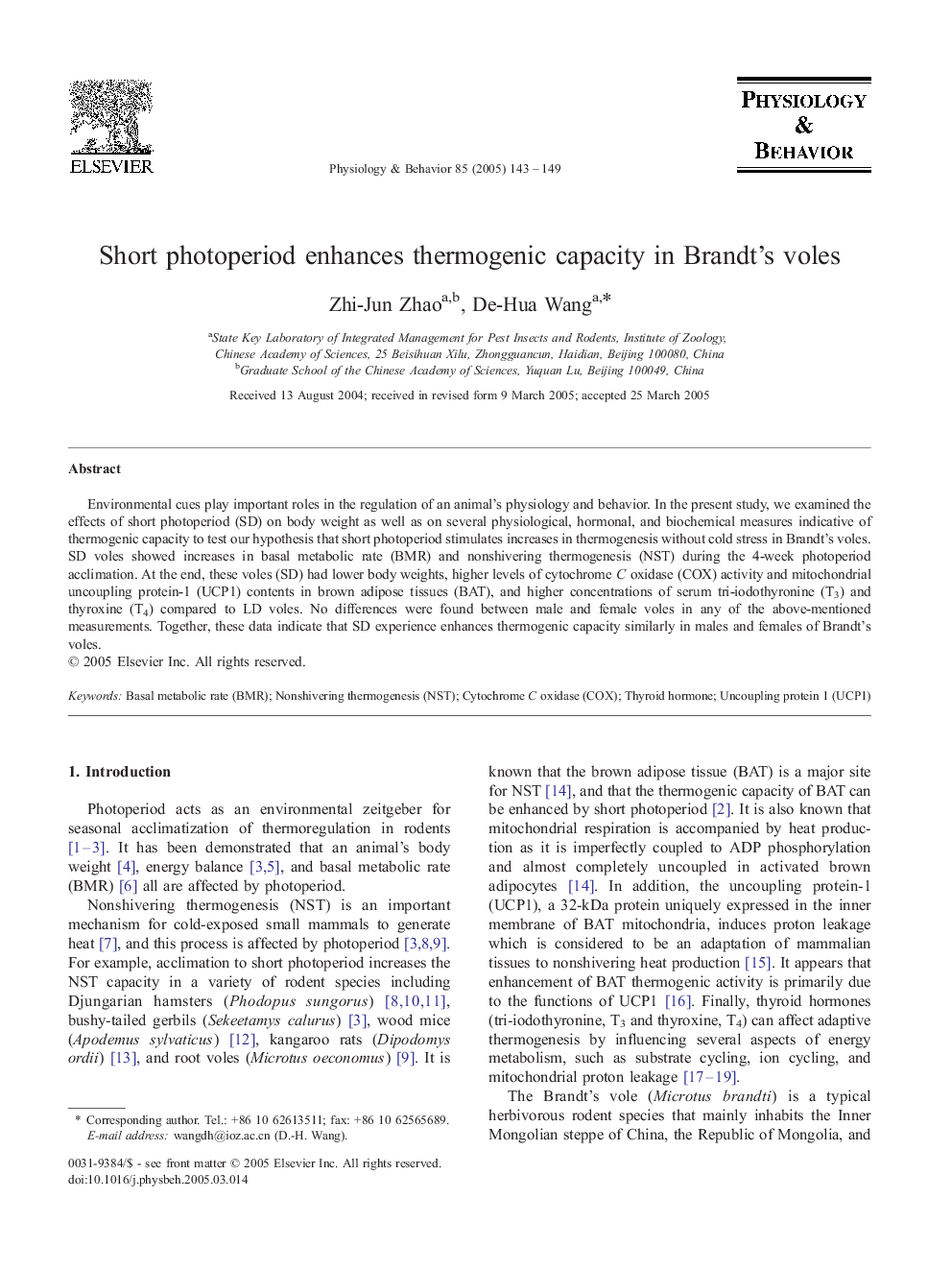| Article ID | Journal | Published Year | Pages | File Type |
|---|---|---|---|---|
| 9150178 | Physiology & Behavior | 2005 | 7 Pages |
Abstract
Environmental cues play important roles in the regulation of an animal's physiology and behavior. In the present study, we examined the effects of short photoperiod (SD) on body weight as well as on several physiological, hormonal, and biochemical measures indicative of thermogenic capacity to test our hypothesis that short photoperiod stimulates increases in thermogenesis without cold stress in Brandt's voles. SD voles showed increases in basal metabolic rate (BMR) and nonshivering thermogenesis (NST) during the 4-week photoperiod acclimation. At the end, these voles (SD) had lower body weights, higher levels of cytochrome C oxidase (COX) activity and mitochondrial uncoupling protein-1 (UCP1) contents in brown adipose tissues (BAT), and higher concentrations of serum tri-iodothyronine (T3) and thyroxine (T4) compared to LD voles. No differences were found between male and female voles in any of the above-mentioned measurements. Together, these data indicate that SD experience enhances thermogenic capacity similarly in males and females of Brandt's voles.
Keywords
Related Topics
Life Sciences
Biochemistry, Genetics and Molecular Biology
Physiology
Authors
Zhi-Jun Zhao, De-Hua Wang,
